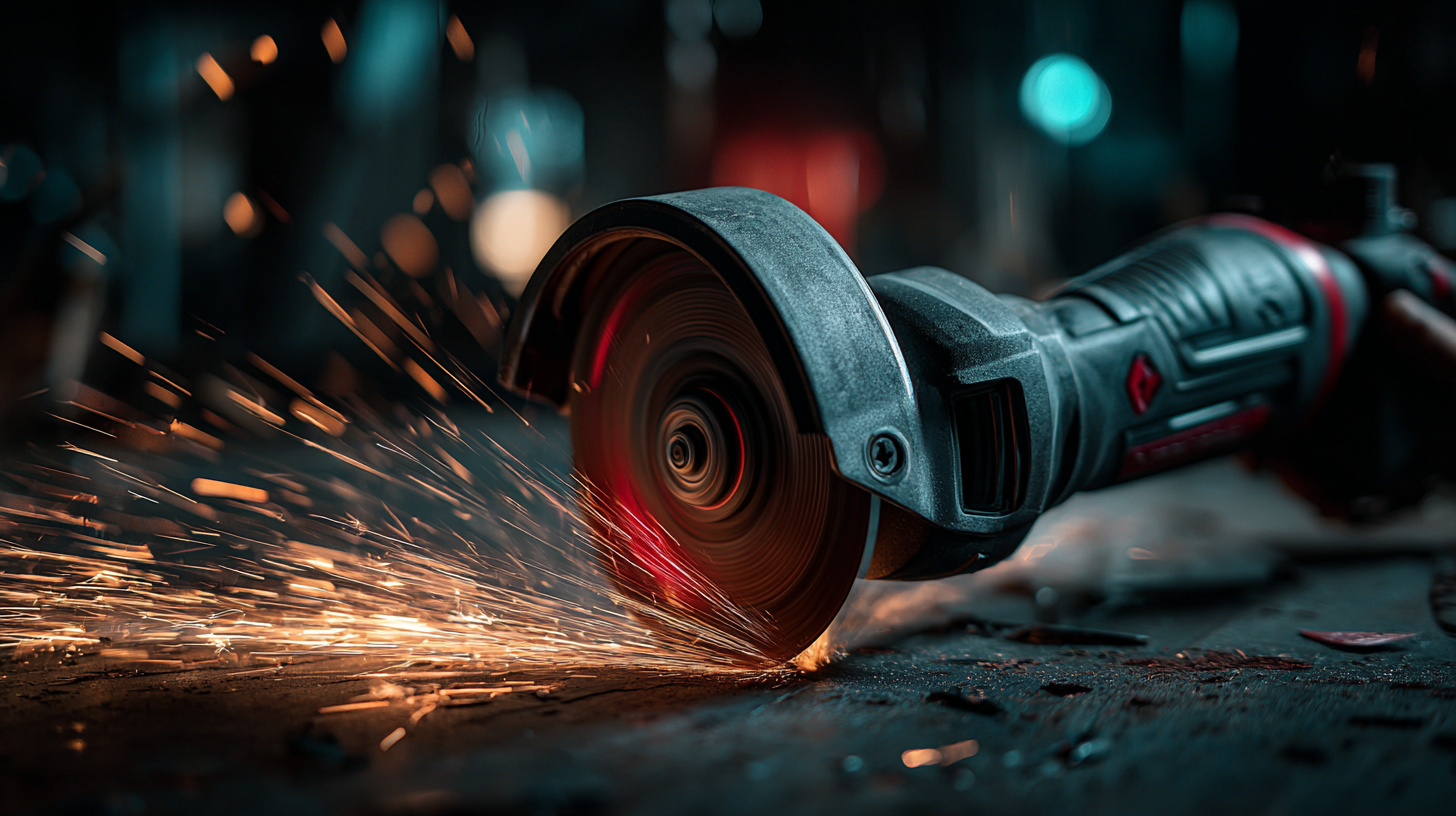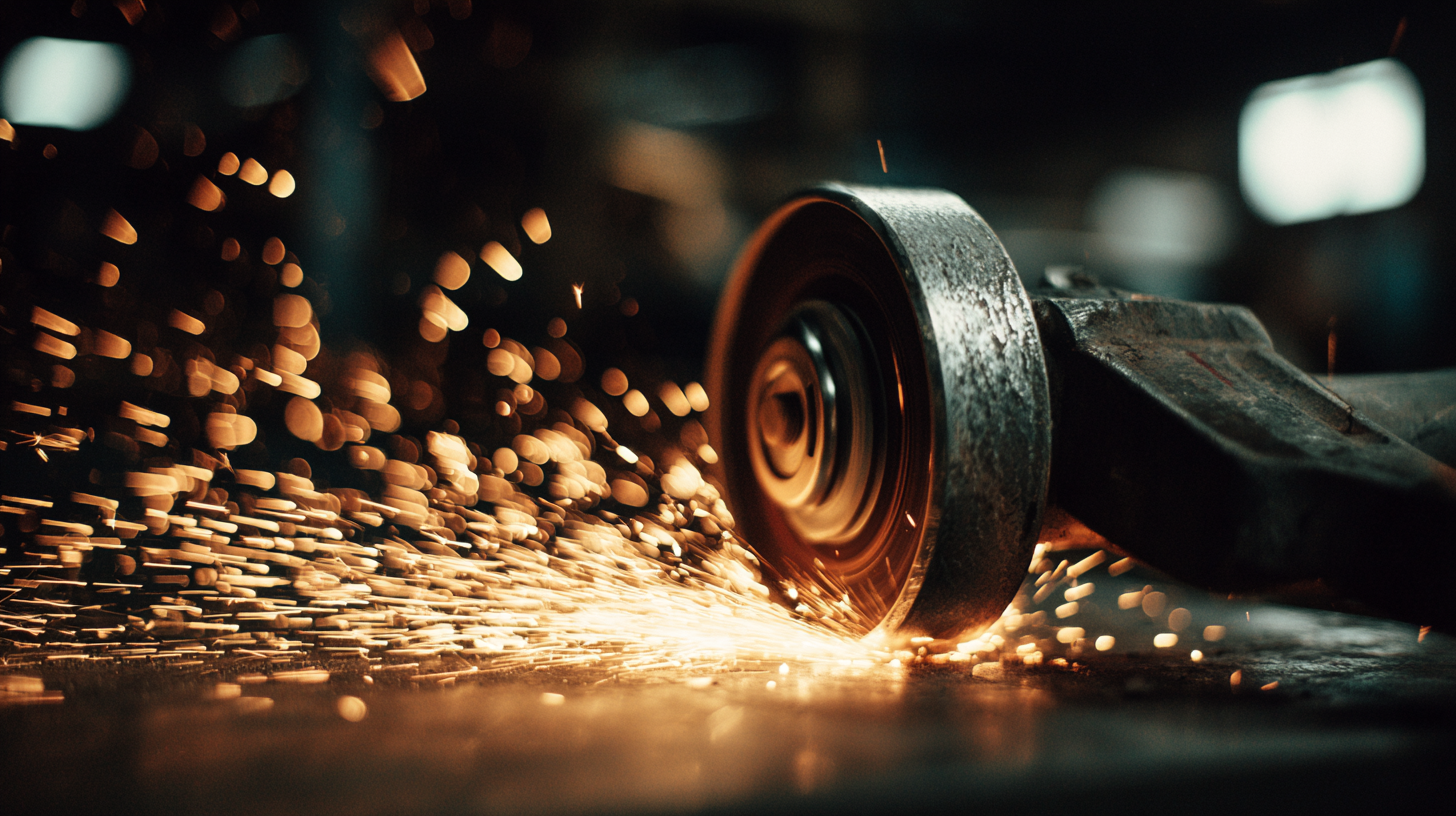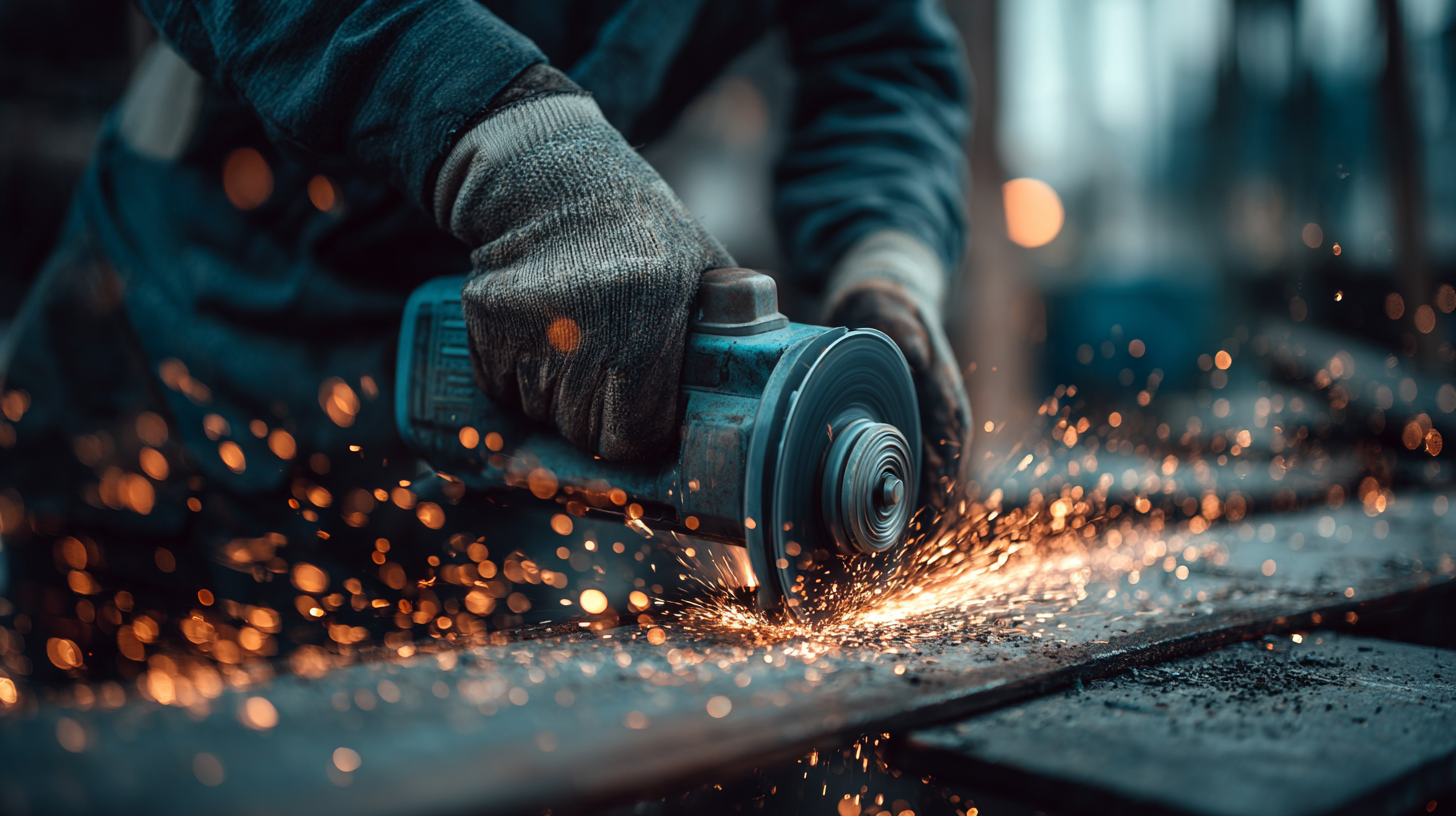
- sales@bjbod.com
- Mon - Sat at 7:00AM to 9:00PM

In the world of power tools, the angle grinder head stands out as a versatile component that significantly influences performance and efficiency across various applications. According to a recent report by MarketsandMarkets, the global power tools market is projected to reach USD 38.5 billion by 2027, driven by the increasing demand for advanced tool technologies in industries such as construction, manufacturing, and automotive.

Understanding the characteristics and appropriate use of different types of angle grinder heads is crucial for professionals seeking to optimize their operational outcomes. Selecting the right grinder head not only enhances productivity but also ensures safety and precision in tasks ranging from metalworking to masonry.
This blog will delve into the top strategies for maximizing performance with the best angle grinder head, providing valuable insights and practical tips for both novice and experienced users.
Choosing the right angle grinder head is crucial for maximizing cutting efficiency in various applications. The head type can significantly influence the quality of the cut, the speed of work, and even the safety of the operation. For instance, diamond blades are ideal for cutting hard materials like concrete and tiles, while abrasive wheels are perfect for metal and general-purpose cutting. Understanding the specific requirements of your project and the material you are working with will guide you in selecting the most effective grinder head.
Another key factor to consider is the size of the angle grinder and the head you choose. Larger heads can tackle bigger jobs, but they may be cumbersome and less precise for detailed work. Conversely, smaller heads offer better control, making them suitable for intricate tasks. Additionally, pay attention to the RPM rating and ensure that your grinder can operate at the intended speed for the chosen head. By aligning your grinder head selection with your project needs, you can enhance performance, reduce material waste, and achieve cleaner cuts, ultimately leading to a more successful outcome.

Understanding the various materials used in angle grinder discs is essential for maximizing performance and ensuring optimal results in any grinding application. The three most common materials are aluminum oxide, silicon carbide, and ceramic. According to a report by the American National Standards Institute (ANSI), aluminum oxide discs are favored for their versatility and durability, making them ideal for general-purpose grinding. Their performance rating is often measured in grit size, with finer grits providing a smoother finish, while coarser grits are better for material removal.

Silicon carbide discs excel in grinding hard materials such as glass, stone, and ceramic. They are renowned for their sharpness and ability to maintain a cooler temperature during processing. The Performance Assessment Group indicates that using silicon carbide can improve efficiency by up to 30% on particularly tough materials. Alternatively, ceramic discs are becoming increasingly popular due to their ability to deliver faster cuts and longer life compared to traditional options. Data from the Grinding Wheel Institute suggests that ceramic discs can outlast aluminum oxide by up to 50%, making them a smart choice for heavy-duty applications. Choosing the right disc material based on the specific task can significantly enhance the performance and longevity of your angle grinder.
When it comes to maximizing performance with an angle grinder, understanding the significance of RPM (Revolutions Per Minute) and torque is fundamental. RPM indicates how quickly the grinder's disc rotates, directly affecting the efficiency and effectiveness of the cutting, grinding, or polishing process. Higher RPM values can lead to faster material removal, but they also come with the risk of decreased control and an increased potential for overheating. Therefore, selecting the right RPM based on the task at hand is crucial; a balance must be struck to ensure optimal performance without compromising safety or precision.
Torque, on the other hand, plays a vital role in the power delivery of the angle grinder. It determines the tool's ability to maintain performance under load. A grinder with high torque can sustain its speed even when encountering resistance, making it particularly effective for more demanding applications such as heavy grinding or cutting through tough materials. When optimizing angle grinder performance, it’s essential to consider both RPM and torque, as they work in tandem to enhance productivity and achieve the desired finish. Properly matching the grinder's head and settings to the task will result in superior outcomes, making a notable difference in your project’s overall efficiency.
| Angle Grinder Model | RPM | Torque (Nm) | Weight (kg) | Disc Size (inch) |
|---|---|---|---|---|
| Model A | 11,000 | 4.5 | 2.5 | 4.5 |
| Model B | 10,500 | 5.0 | 2.8 | 4.5 |
| Model C | 12,000 | 4.0 | 2.3 | 5.0 |
| Model D | 9,800 | 3.5 | 3.0 | 4.0 |
| Model E | 10,800 | 5.2 | 2.6 | 5.5 |
When exploring the best angle grinder heads on the market, it’s essential to consider the innovations offered by leading brands. Recent advancements in materials and design have not only improved the durability and efficiency of angle grinder heads but also enhanced their performance in various applications. Brands are now focusing on integrating cutting-edge technologies and user-centric designs, which are crucial for professionals who demand the best tools for their projects.
A comparative analysis reveals that some manufacturers have made significant strides by incorporating advanced engineering and smart technology into their products. For instance, innovative features such as AI-driven performance monitoring and adaptive grinding capabilities are setting new benchmarks. This trend towards smart tools resonates with broader technological advancements, reflecting a move towards greater automation and efficiency in different sectors. As brands continue to push the envelope with their angle grinder head designs, users can benefit from tools that not only perform better but also adapt to the specific needs of their tasks. Engaging with these innovations can lead to improvements in workflow and overall output quality.
When using angle grinders in the workplace, safety should be the top priority. According to recent reports, angle grinders account for a significant number of injuries, including severe cuts and burns, primarily caused by kickbacks and shattered discs. To mitigate these risks, it is crucial to implement best practices and use appropriate safety gear. For instance, wearing protective eyewear and flame-resistant clothing can drastically reduce the chance of injury from flying debris and accidental fires.
Tip: Always inspect the angle grinder and discs before use. If the disc shows any signs of wear or damage, replace it immediately to prevent dangerous accidents.
Moreover, ergonomic considerations should also be taken into account. Body strains from prolonged use and exposure to noise can severely impact a worker’s health. Upgrading to grinders designed with ergonomic features can help alleviate these issues. Opting for equipment that supports good posture can enhance comfort and productivity.
Tip: Incorporate regular breaks and stretching exercises into your routine to reduce fatigue and prevent musculoskeletal injuries while operating angle grinders.